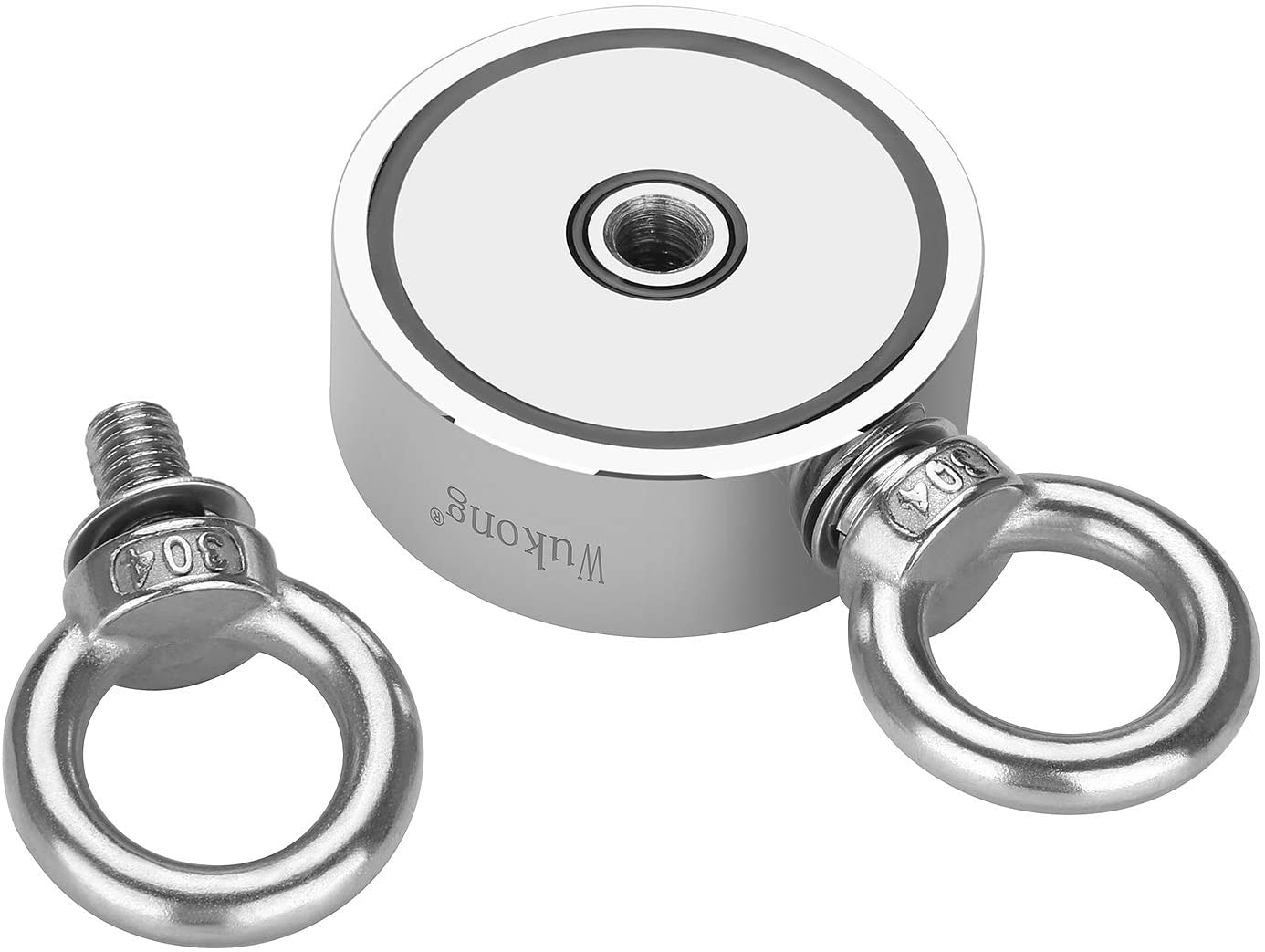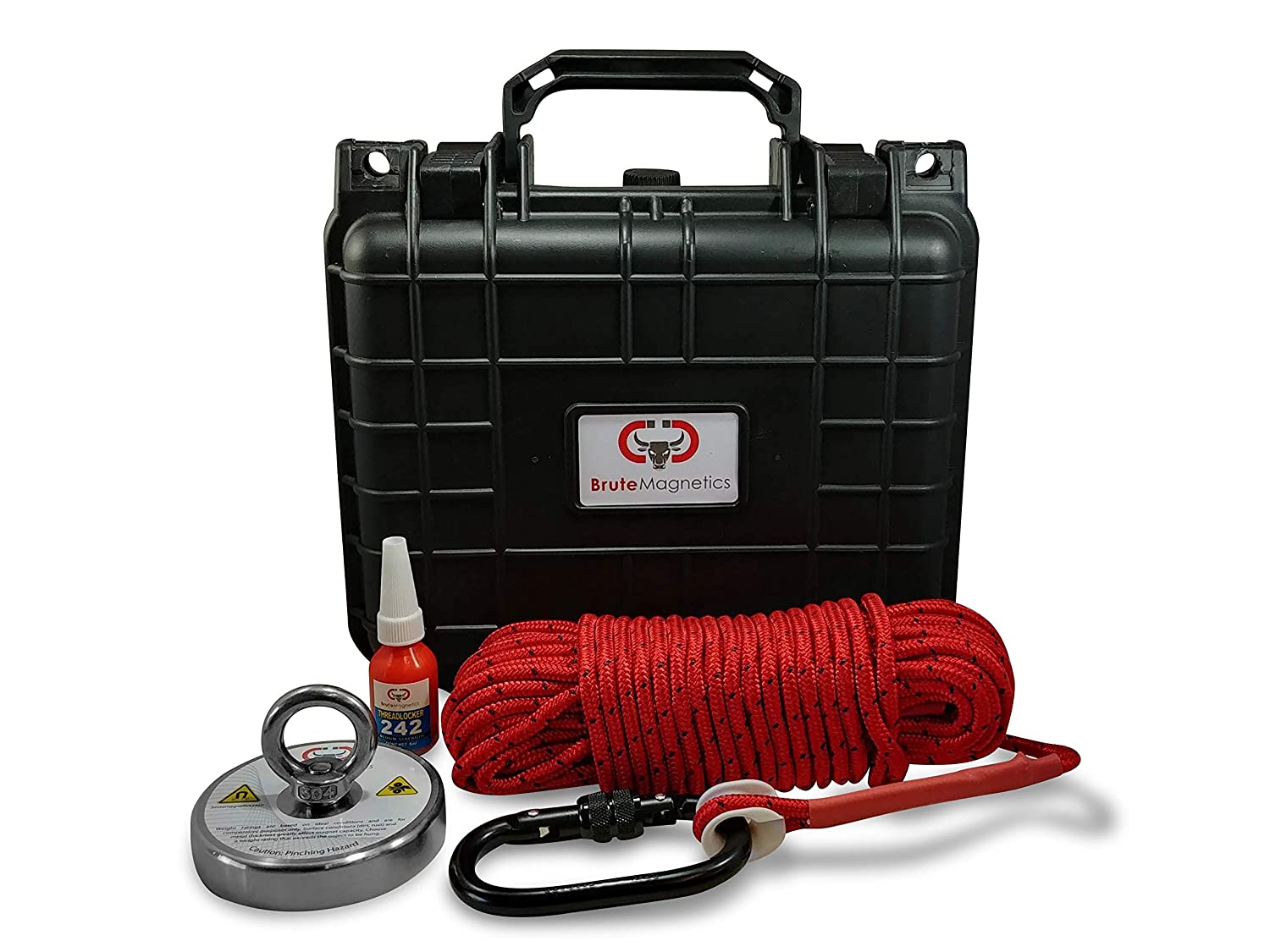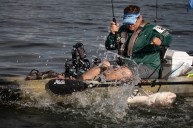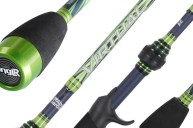Magnet fishing is a fun alternative outdoor hobby.
One can never have too many outdoor hobbies. At least that is what we tell ourselves every day as we keep adding new and more eccentric ones. Today we're going to talk about magnet fishing.
For those not familiar, it is sort of a cross between treasure hunting and the fishing most anglers are familiar with. Basically, you attach a strong magnet to a rope and toss it into different bodies of water to see what metal objects you can dredge up from the bottom. People have found some rather interesting things while doing it!
If you enjoy metal detecting or beach combing, you'll likely enjoy magnet fishing. Here is how to get started in your new hobby. We'll also go over some safety basics to make sure your first time out is a pleasant one.
Needed equipment
For the aspiring magnetic fishing hobbyist, the good news is that one of the simplest things to get started in. All you need is a strong neodymium magnet, some rope and a sense of adventure. Neodymium magnets are a form of rare earth magnet. They are insanely powerful magnets that make the stuff on your fridge look like children's toys.
A variety of different fishing magnets are available for sale online at the usual places like Amazon. Prices range between $17 and up to $100 depending on the diameter and pull force of the magnet. Most seasoned magnet fishermen agree that around 400-500 pounds is a good weight to get started. These magnets tend to fall in the $30-50 range. That's a huge benefit right off the bat. These magnets are much cheaper than a brand-new metal detector!
One of the top brands you'll hear mentioned over and over is Brute Magnetics. They make standard magnets which are a disc with an eyebolt in one end or double-sided magnets that give you double the surfaces. For about $75 you can get a complete magnet fishing kit from them that includes a carrying case, rope, carabiner and thread loc. In case you're wondering, thread loc just helps keep the eye bolt screwed in and prevents the magnet from becoming loose while you're using it.
As for ropes, preference is going to vary based on who you ask. Many magnet fishers use braided or twisted ropes. We've heard of people using wire cables and paracord too, although this is less common. Just be sure you're getting a strong, quality rope that is rated heavily enough to move the larger objects you might get snagged on. Don't forget a good pair of gloves too! You might have to sift through a lot of junk to find the good stuff, so you're going to want to protect your hands from rusty metal and sharp edges.
Magnet fishing tips
Once you have your magnet, the fun part will be figuring out where to use it first. The simplest solution is to head to the local boat launch or city park and just start tossing. Just remember to tie the end of the magnet rope to you. The last thing you want is to have your new, $50 magnet go sailing into the water with all your rope, never to be seen again. Use a lighter knot on the end you secure to yourself, just so you can get free easily. For safety purposes.
Try to start out with an area where there aren't going to be a ton of snags. That is why we suggested the boat launch. Another good option might be a boat marina or canal. Try to look for places where human activity is high, but trees, rocks and other snags are few. It's almost the opposite of angling for fish in a way. Also consider places where people might want to dispose of something like a gun or knife. Many magnet fisherman have made amazing finds near bridges.
Also think of areas where things have disappeared. It might be worth checking out historic records to see where buildings, parks and other popular areas were years ago that no longer exist. In a way, it's much like the research metal detecting enthusiasts do to find quality areas to hunt.
Technique varies when it comes to magnet fishing. You can simply drag it along the bottom. Some people like to "jig" the magnet along the bottom much like you might do for fishing. You can toss from the shore or dip the magnet vertically from a bridge or dock. Really, there is no "wrong" way to magnet fish.
Don't forget to periodically check the end of your magnet and clear it of small debris. Stuff like fishing hooks, nails and assorted small trash metal can accumulate on the bottom and will reduce the effectiveness of your magnet in picking up the cool stuff.
One thing to keep in mind is safety. These magnets are very powerful, and it takes some people by surprise. Fingers can be smashed between the magnet and another piece of metal if you aren't paying attention. Just be cognizant of where your hand placement is when handling the magnet and you should be fine.
Sooner or later your magnet is going to get snagged on some underwater obstruction. When this happens, don't panic. Yanking on the end of the line can lead to your expensive new piece of equipment being lost forever. Try getting a new angle by walking down the bank or bridge and then applying steady pressure from a different direction. Sometimes you'll find it is simply an underwater tree, rock or stump that you're hung up on.
If you simply can't get it loose, only enter the water if it is safe to do so and when you have someone there to watch your back while you do it. No magnet is worth drowning over.
Is magnet fishing legal?
We do want to mention this quickly because there have been some questions about legality. However, it appears magnet fishing is perfectly legal in every state except South Carolina. It's hard to find exactly why that is, but from what we can piece together, it seems like it has something to do with how the state is defining archeological artifacts.
We should also mention it is worth paying close attention to the body of water you are fishing. If it is on private property, you're going to want to obtain permission ahead of time. Just to be on the safe side. Another thing to consider is laws regarding salvage.
For instance, I live in Michigan and the laws can be a little hazy when you consider something like the Abandoned Shipwrecks Act. This act states that all shipwrecks in the Great Lakes are under the ownership of the state the wreck lies in. Granted, you're not going to be pulling up shipwrecks, but things are a little fuzzy at best when it comes to salvaging from the Great Lakes. If you have any doubt, contact local law enforcement or the agency that manages natural resources for clarification. Better to know ahead of time than having to explain yourself to the law later.
In most instances, we don't think you're going to have an issue though so long as you're safe and responsible about it. Magnet fishing is a great form of environmentalism because you're cleaning up a natural body of water. Just make sure you dispose of any trash you don't keep properly.
What can you find magnet fishing?
https://www.youtube.com/watch?v=zDPw—qZCac
The answer is just about anything. Gold and precious metals like silver don't respond to magnets, but you'll be able to pull up plenty of cool old artifacts. Magnet fishers have pulled in anchors, fishing rods, boat motors, keys, knives and more from their local rivers and streams.
In Europe, magnet fishermen regularly pull up machine guns, bayonets and sometimes even old grenade relics from World War II. Pulling up explosives is rare, but it does happen. If you catch something like that, leave it alone and call in authorities to deal with it.
Other magnet fishermen regularly catch things like bicycles, scooters, shopping carts and more. It's a good way to clean up a polluted section of river in a hurry. You may even be able to sell some items to a salvage yard for scrap metal in some instances.
Part of the fun of magnet fishing is not knowing exactly what you may find in your local river or stream. There is only one way to find out!
For more outdoor content from Travis Smola, be sure to follow him on Twitter and check out his Geocaching and Outdoors with Travis YouTube channels.
NEXT: GUY GOES 'MAGNET FISHING' IN A POND AND CATCHES A SUBMACHINE GUN
WATCH
https://rumble.com/embed/v3v70f/?pub=7gve







